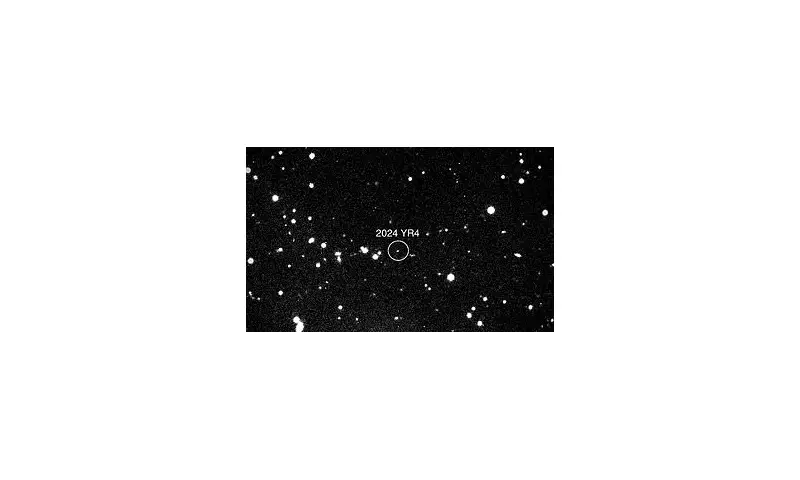
Astronomers have delivered a sobering update about a potentially hazardous asteroid that could strike the moon with devastating consequences. Designated 2024 YR4, this 220-foot space rock currently has a four per cent probability of colliding with the lunar surface on 22 December 2032.
The Lunar Threat Assessment
First detected on 27 December 2024, asteroid 2024 YR4 immediately raised concerns within the planetary defence community. At its peak, the asteroid had a terrifying one in 32 chance of hitting Earth, the highest probability ever recorded for a known asteroid. Although further observations reduced the Earth impact risk to nearly zero, scientists soon identified another worrying possibility - the asteroid might instead hit the moon.
The massive space rock, measuring between 174 and 220 feet, travels at speeds exceeding 30,000 miles per hour relative to Earth. Dr Andrew Rivkin of Johns Hopkins University explains that fresh observations could dramatically alter the current one-in-twenty-three chance of lunar impact. There's a five per cent possibility that new data could increase the collision probability to thirty per cent.
Critical Observation Window Approaches
The asteroid has remained hidden from Earth-based telescopes since mid-2025, creating significant uncertainty about its precise trajectory. However, the James Webb Space Telescope will have two brief opportunities to observe 2024 YR4 on 18 and 26 February. These observations represent one of the last good chances to accurately predict the asteroid's path before it returns to view of terrestrial telescopes in 2028.
According to Dr Rivkin and his colleagues, there's an eighty per cent chance that February's observations will reduce the impact probability to below one per cent. However, the alternative outcome - a significant increase in risk - means space agencies cannot afford complacency. The James Webb Telescope will get another observation opportunity in 2027, but decisions about potential deflection missions need to be made much sooner.
The Deflection Dilemma
Space agencies worldwide face a complex decision about whether to attempt deflecting 2024 YR4. NASA's successful DART mission demonstrated that kinetic impact methods can alter an asteroid's course sufficiently to protect Earth and the moon. However, these deflection techniques require years of advance planning and must be initiated well before any potential impact.
NASA researchers have evaluated various deflection strategies, including nuclear options, but all require launch by 2030 at the very latest. Dr Rivkin emphasises that by 2028, we would be cutting things very, very close, making early 2026 a more realistic deadline for mission preparation.
If 2024 YR4 does strike the moon, the consequences would be dramatic. The impact would create a crater approximately 0.6 miles wide and release energy equivalent to 500 Hiroshima atomic bombs. Between 10,000 and 30,000 tonnes of lunar debris could be ejected into space, with Earth's gravity potentially funnelling 10-30% of this material toward our planet.
Richard Moissl, head of planetary defence at the European Space Agency, notes that while a lunar collision poses no direct risk to people on Earth, the resulting debris cloud could threaten crucial space-based infrastructure including communications and navigation satellites. Despite these concerns, no missions to surveil or deflect 2024 YR4 currently feature in ESA's budget for this year.
The coming months will be critical for determining whether 2024 YR4 represents a genuine threat requiring intervention or merely another near-miss in our cosmic neighbourhood.





